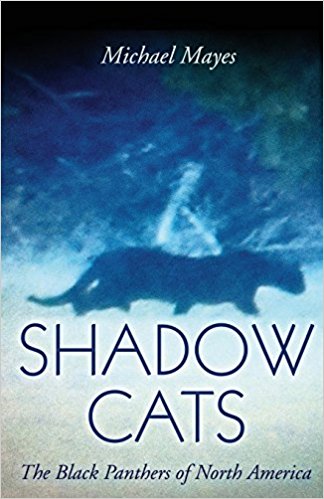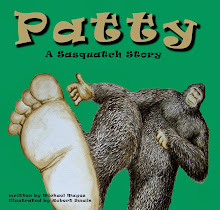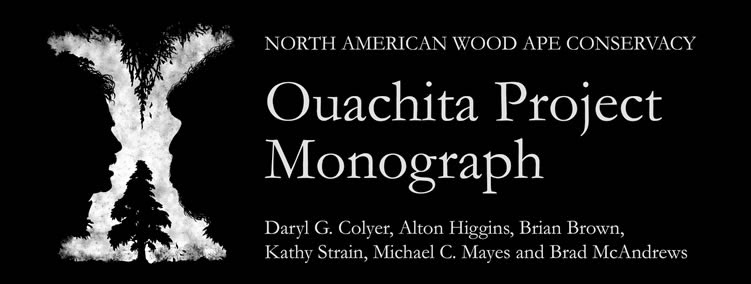Anyone who knows me can tell you that I am a huge fan of the History Channel program “The Curse of Oak Island.” I guess it should not be that surprising, as I have always been fascinated by a good mystery. The story of the men and women who have tried to solve the riddle of this small island in the north Atlantic over the last 200 years has captivated me and the program is appointment television at my house. My wife, knowing I wanted to know more about the place, what went on there, and who might have been behind it, gifted me with the book, The Curse of Oak Island: The Story of the World’s Longest Treasure Hunt by Randall Sullivan this past Christmas. I was not very far into the book before I ran across a story I wanted to share. I have gone back and forth over whether or not the tale belongs on this site. Ultimately, I decided it was my site and I could put whatever I wanted on it, lol. In all seriousness, I believe most of you reading this are like me in that you enjoy tales of the mysterious and creepy. This story certainly falls into those categories.
The stories of buried treasure on Oak Island go back hundreds of years, but the story I want to tell you really does not have anything to do with the actual search for riches; rather, it has to do with one of the unfortunate souls whose time on Oak Island looking for that mythical fortune ruined, and ultimately cost him, his life. This is the story of a man named Jim Kaizer.
We will pick up the story in 1959, the year Robert Restall signed a one-year agreement with Mel Chappell to take over the hunt for the treasure allegedly buried on Oak Island. Viewers of the television show know the story of the tragedy that befell the Restall family a few short years later well. For the rest of you, I will summarize it now. On August 17, 1965, Robert Restall, at approximately 2:45 p.m., fell into the deep shaft he and his family had been excavating near Smith’s Cove in an attempt to reach the famed “Money Pit,” where untold riches were rumored to be hidden. No one actually witnessed the fall. It is thought Restall was either climbing down into the shaft or leaning over and peering into it when the accident took place. Restall must have made some kind of sound when he fell as his oldest son, Robert Restall Jr. (Bobby), and co-workers Cyril Hiltz and Andy DeMont realized something was wrong immediately and raced to the shaft. Bobby, seeing his father floating in the dark water at the bottom of the pit, immediately started down the ladder to attempt a rescue. By the time Hiltz, DeMont, and Restall investor Karl Graeser arrived and peered into the shaft, Bobby had, also, somehow become unconscious and fallen to the bottom. The three men, knowing only that their friends were in dire trouble, starting down the ladder to render aide. Not one of them made it to the bottom before they, too, fell unconscious from the ladder to the bottom of the pit.
Present on the island that day was a Buffalo, New York fire captain named Edward White. White had been camping nearby and heard the cries for help. Looking down the shaft, he saw the grisly pile of unconscious bodies stacked liked firewood at the bottom. White realized the shaft must have filled with some kind of poisonous gas that had overcome the men. Even knowing this, he lashed a rope around his thighs and waist and had tourists who had gathered near the opening lower him into the shaft. White managed to get a line tied around DeMont just before being overcome by the gas himself. The tourists on hand lifted White and DeMont out of the pit where they were revived. Robert Restall, Robert Restall Jr., Karl Graeser, and Cyril Hiltz would all die in the cold black water at the bottom of the shaft.
News of the tragedy quickly spread until it reached the ears of Jim Kaizer. Kaizer had been working on Oak Island with the Restalls for months and had become very close to Robert. Fifty-one years after the tragedy, Faron Kaizer, Jim’s son, told author Randall Sullivan, “He (Jim) and Mr. Restall were two peas in a pod, both tough and hardworking. They were the type of men who didn’t have a lot of education, but just knew how to do things. Dad really enjoyed going over there. He rarely missed a day, because it was exciting for him.” As fate would have it, though, Jim Kaizer was absent on that fateful day in August of 1965. A water pump at the family home had broken and Jim, at the insistence of his wife, had stayed home from work to get it running. That broken pump probably saved his life.
Once alerted that something bad had happened on the island, Kaizer raced to the scene where he was greeted by a throng of people gathered around the shaft in which the bodies of the four men rested, the shaft he had helped dig. By now it was clear the men at the bottom of the shaft were clearly dead and the operation was now in a recovery, rather than a rescue, mode. The volunteers of the Chester Fire Department had decided it was too dangerous for anyone to go into the pit and retrieve the men. Begrudgingly, it was decided the method of recovery would be via a three-pronged gaff called a treble hook that would be lowered into the shaft. Realizing what a messy operation that would be, and the additional strife it would cause Mildred Restall and her surviving son Rick, Kaizer stepped up and said, “No way, you’re not doing that. I’ll go down.” Using an old World War II era gas mask stuffed with wet rags and wearing thick coveralls, Jim Kaizer made four trips to the bottom of the pit, recovering the bodies of all four men. “After that,” said Faron Kaizer, “Dad wasn’t the same.” Jim’s grandson Tim agreed and said, “My grandmother said it changed him, but it might have been more what happened after. It was hard to know…”
After the death of her husband, Mildred Restall signed over the search rights on the island to a man named Robert Dunfield and moved away. Dunfield, needing a man who knew the island, wasted no time in offering the job of night watchman to Jim Kaizer. Kaizer, who after the events of that terrible day had lost his enthusiasm for digging, accepted the position. It would turn out that he would not keep the job for long. One night that fall, Kaizer came home in the wee hours of the morning. It was clear to his family that he was badly shaken. Faron Kaizer recalls, “He was just swearing up and down, not like he was angry, but like it was just coming out of him. It really scared us…I realize now he was scared. But he was a man who never got scared so he didn’t know how to express it except by swearing.” Seeing the rough and tumble (and previously fearless) Jim so badly shaken and afraid rattled the family. Faron recalls that after about a week his father calmed down, “But Dad still wouldn’t go back to Oak Island. He never went back on the island again, not once after that night.”
The details of what happened to Jim that fateful night came out in bits and pieces over time. Kaizer first shared details with his wife, Beulah, and later his boys. “He told me I wouldn’t believe him, but he was tellin’ me anyway,” Faron recalled. According to Faron, Jim was in the Restall’s old cabin, where he spent the bulk of most nights while on the island, when something terrifying took place. “Dad said it was about eleven or twelve o’clock. He said, ‘I had a little fire going. I put some wood on the fire and then I lay down on the cot and closed my eyes.’ Apparently, he fell asleep. And he said, ‘I woke up and I couldn’t breathe.’ And he said there was two of the biggest red eyes you would ever want to see looking right into his. And the whole body was covered with tight, curly black hair. He said that was all he could see, because the…whatever it was, was holdin’ him down by his arms and had him pinned so tight he couldn’t move. But then it smiled at him and said, ‘Don’t ever come back.’ My dad said when it let him go and disappeared the whole building shook.” After being released, Jim Kaizer wasted no time getting to his truck and getting off of Oak Island. “And he wouldn’t ever go back on the island again after that,” Faron said. “He told me, ‘It was the only thing that’s ever scared me.’”
According to Faron Kaizer, his father was never the same after that. He began drinking heavily, would sometimes be silent and brooding for days at a time, and would often fly into a rage for no apparent reason. Jim’s own family began to make themselves scarce whenever he was around due to his erratic behavior. Jim even started to have run-ins with the law. He became even more unstable whenever he would share the story of what he encountered that night on Oak Island with someone who, inevitably, would not believe him. “When he realized people didn’t believe him, he stopped talking and just bottled it up,” said Faron. Even Jim’s wife, Beulah, though she seemed to believe her husband's story, struggled with just what to think of it. “I remember Dad telling Mom certain things,” remembers Faron. “And she would just shake her head and walk away.”
The story of Oak Island treasure hunter Jim Kaizer would end tragically in 1976 when he shot himself in the head with a rifle outside of a bar in Western Shore. He was not yet fifty years-old. It remains unclear as to what tormented Jim Kaizer the most. Was it the death of his good friend Robert Restall and the three other men that terrible August day in 1965? The four hellish, yet heroic, trips he made into the shaft to retrieve the bodies of his friends? The guilt he must have suffered for not having been on site that day? Or was it the hair-covered abomination that pinned him to his cot, stared through him with blood red eyes, and warned him to never come back to Oak Island?
Some have suggested a sasquatch/wood ape is responsible for the strange experience of Jim Kaizer, though these people have a difficult time explaining the fact that the creature reportedly spoke. Even most of those willing to accept the possibility that wood apes exist would find the idea of an English speaking individual preposterous; however, such claims, though exceedingly rare, have been made before. The dire warning issued by the creature and the way it disappeared bear striking similarities to the experience of Davy Crockett – who was on his way to San Antonio - in the Piney Woods of east Texas in 1836. He, too, claimed an experience with a huge, hair-covered beast that issued a warning. In a letter to his brother-in-law, Crockett wrote, “…I swear to you, Abe, that what spirit came upon me was the shape and shade of a large ape man…” He added that the creature was, “covered in wild hair.” Crockett then wrote, “The monster then addressed a warning to me. Abner, it told me to return from Texas, to flee this Fort and to abandon this lost cause.” The parallels between these two encounters are eerie and could not be more obvious, but the answer to the question of what was actually seen by these two men remains elusive.
Nova Scotia is not without alleged sasquatch sightings and activity. Hikers walking the trails of Uniake Museum Park have reported having had rocks thrown at them, tree-shaking, noises like foot-stomps, and being run out of/escorted from the area by an unseen creature. Another tale told around Nova Scotia campfires is of a Cape Breton sasquatch that seemed to take great pleasure in catching a larger fish - with its bare hands - than a stunned fisherman who had just landed one of his own.
Still, the most likely explanation is that Jim Kaizer drifted off to sleep and had a nightmare, one that seemed incredibly real to him. It seems logical enough, but is it not possible that a lightly dozing Kaizer might have incorporated some real events into his dream? I know this has happened to me while in that gray area where I am half-awake and half-asleep. For example, a while back I was enjoying a Sunday afternoon nap on the couch. I had a dream that an old friend was ringing the doorbell. Suddenly, I snapped to and realized the doorbell was, indeed, ringing. It was not the old friend I had been dreaming of, but a young lady selling Girl Scout cookies (almost as good, lol). The point is, while dozing, my mind took something that was really happening – the ringing doorbell – and incorporated it into my dream. A good friend of mine shared a similar, though far creepier, story regarding this phenomenon and his mother-in-law. This lady is quite independent and makes a habit of backcountry hiking alone. She is sometimes gone a week or more on these solo hiking trips. Several years back she shared an experience with my friend she had while hiking in, if I recall correctly, Yosemite National Park. She always travels light and was carrying only her sleeping bag on this trip. One night, very late, she awoke to see a huge man with a thick beard leaning over her. My buddy asked her what happened next and she said she could not recall and must have just gone back to sleep. Is it possible, that a bearded man was traveling alone and on foot through the area in the middle of the night? I suppose, but I have often wondered if this woman awoke to see something else leaning over her and her half-awake mind turned whatever it was into a large, bearded man to make it more palatable and less frightening. Could Jim Kaizer have really have seen a red-eyed, hair-covered monster? Could his mind, traumatized by the recent tragedies and wracked by guilt, have dreamed the words of warning? In other words, could the creature have been real and the words spoken been the dream? Many have posited this is what happened to Crockett in the Piney Woods of Texas all those years ago. If so, what an incredible premonition. One can only wonder what his fate would have been had he heeded the warning and not proceeded to the Alamo. Jim Kaizer did heed the warning and never again set foot on Oak Island. Even so, his life ended tragically soon after. Perhaps, there really is no escaping our fate.
Oak Island has long been rumored to be haunted. Strange lights and fireballs have been seen. Inexplicable equipment failures – some with catastrophic consequences – have plagued every treasure hunter to put shovel to dirt there. Even Marty Lagina, on an episode of "The Curse of Oak Island: Drilling Down," admits to hearing eerie screams while out alone near the Money Pit area one night. Marty, by far the more skeptical of the treasure-hunting brothers, admits to having been scared and says he no longer wanders the island at night. Could we add a sasquatch to this eerie mix, based on the account of Jim Kaizer? Or, could it have been something even more sinister. Jim’s grandson, Tim Kaizer, said, “…Oak Island scares me. I believe there is a bad spirit on the island. I believe my grandfather encountered it.”
I will leave you with this, Tim once asked his grandmother, Beulah, about the events of that night and whether or not she believed Jim’s story. Tim recalls her response, “My grandmother looked at me, and then she told me that when he came home that night Jim had showed her his arms. And they had huge bruises on them that had been made by handprints.”
Sources:
Sullivan, Randall. The Curse of Oak Island: The Story of the Worlds Longest Treasure Hunt. Atlantic Monthly Press, 2018.
“Bigfoot Field Researchers Organization.” Bigfoot Field Researchers Organization, bfro.net/.
Fairclough, Ian. “Stories to Give You Chills and Thrills.” Halifax Chronicler Herald, 30 Oct. 2011.


















